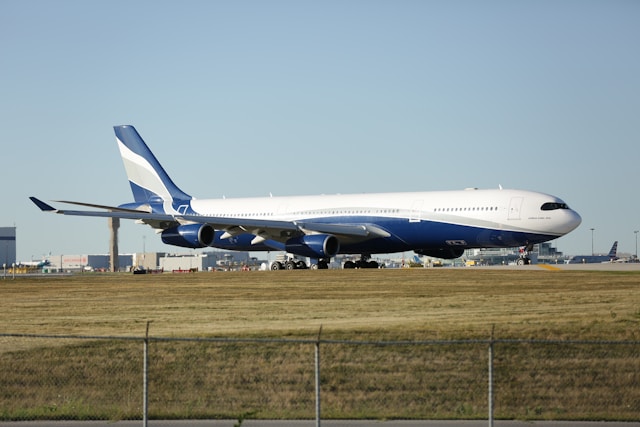Nuuk prepares for its first international airport, paving the way for direct flights and boosting tourism in the Arctic territory.
In a monumental shift for Greenland, the capital city of Nuuk is on the verge of welcoming its first international airport, a development set to significantly enhance connectivity to the Arctic territory. Scheduled to open on 28 November, this new airport will accommodate larger aircraft for the first time, enabling direct flights from the US and Europe and heralding a new era for the sparsely populated island.
Greenland, an autonomous territory within the Kingdom of Denmark, is known for its breathtaking landscapes, vast ice caps, and a population of just 18,000 residents in Nuuk. The town, with its charming colourful cottages and modern apartment blocks, is nestled beside a stunning sea fjord. Until now, the only flights available from Nuuk involved small propeller planes transporting passengers to Kangerlussuaq, a former military airport 200 miles (319 km) north, where they would then transfer to larger jets.
Embed from Getty ImagesThe new airport, featuring a longer runway and a state-of-the-art terminal, will change all that. Jens Lauridsen, CEO of Greenland Airports, anticipates a transformative impact on tourism and the local economy. “I’m sure we will see a lot of tourism, and we’ll see a lot of change,” he asserts, as construction crews finalize the runway extension and terminal enhancements.
Once operational, direct flights to Nuuk will be available from Copenhagen, with United Airlines scheduled to commence services from New York in the summer of 2025. A young Nuuk resident expressed excitement about the changes: “We have been shut from the whole world, and now we’re going to open to the world.”
But Nuuk is just the beginning. In 2026, a second international airport will debut in Ilulissat, Greenland’s top tourist destination, famous for its majestic icebergs. Additionally, a regional airport in Qaqortoq, the largest town in southern Greenland, is in the pipeline, further enhancing connectivity across the territory.
The ease of travel will be a relief for many locals. Isak Finn, another Nuuk resident, shared his frustrations with the current travel setup: “It takes a long time. You have to wait, and then if there’s bad weather or not enough planes, you get stuck there. It’s so annoying.” With the new airport, he anticipates a smoother travel experience.
Jacob Nitter Sorensen, CEO of Air Greenland, also sees the airport as a “game changer,” reducing travel times and operational costs. Ticket prices have already begun to drop, and as demand increases, the airline plans to expand its routes and possibly invest in new aircraft. The competitive landscape is heating up as larger international carriers show keen interest in entering the Greenlandic market, with direct flights from Europe and the East Coast of the US set to be just a four-hour journey.
Constructing Nuuk International Airport has required significant investment, with over $800 million (£615 million) earmarked for the three airport projects, funded in part by a loan package from Denmark. Concerns had arisen over potential Chinese investments in the airports, leading to Denmark stepping in with more favourable loan rates. Javier Arnaut, head of Arctic social science at Greenland University, noted, “Denmark offered more affordable and attractive rates for these loans,” ensuring the projects remain under local control.
Although initial public reaction to the airport’s development was mixed, support has grown as awareness of its potential benefits spreads. “With big infrastructure, it always divides people,” resident Karen Motzfeldt noted. “There is always a group who is against, and always a group who loves it.” Nevertheless, she expressed optimism about having more direct travel options to cities like Copenhagen or London Heathrow.
Greenland’s economy has long relied on the public sector and fishing, with most goods imported. However, the introduction of the new airports is seen as a critical step toward diversifying the economy, with hopes of boosting industries such as mining and tourism. Naija Nathanielsen, Greenland’s Minister of Business, Trade and Mineral Resources, stressed the importance of infrastructure: “In all these cases, infrastructure is key. It makes everything easier.”
Moreover, with larger cargo planes set to land in Nuuk, the flow of goods in and out of the territory will be streamlined, bolstering local businesses. For instance, Polar Seafoods, a Greenlandic seafood company, is already exploring opportunities for fresher exports, having trialled airfreight in anticipation of the new airport.
Tourism is expected to be the biggest beneficiary of these developments. Following a 36.5% increase in foreign visitors last year, reaching over 140,000, the potential for growth is immense with expanded flight options. Minister Nathanielsen acknowledges the dual-edged nature of increased tourism: “We really want to try to welcome the tourists in the bigger cities, but we also want to spread them out more.”
As Greenland prepares to open its doors wider to the world, the new airports herald a transformative period for the Arctic territory, promising economic revitalisation and enhanced connectivity for its residents and visitors alike.
